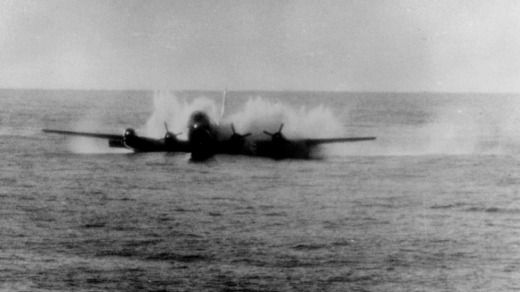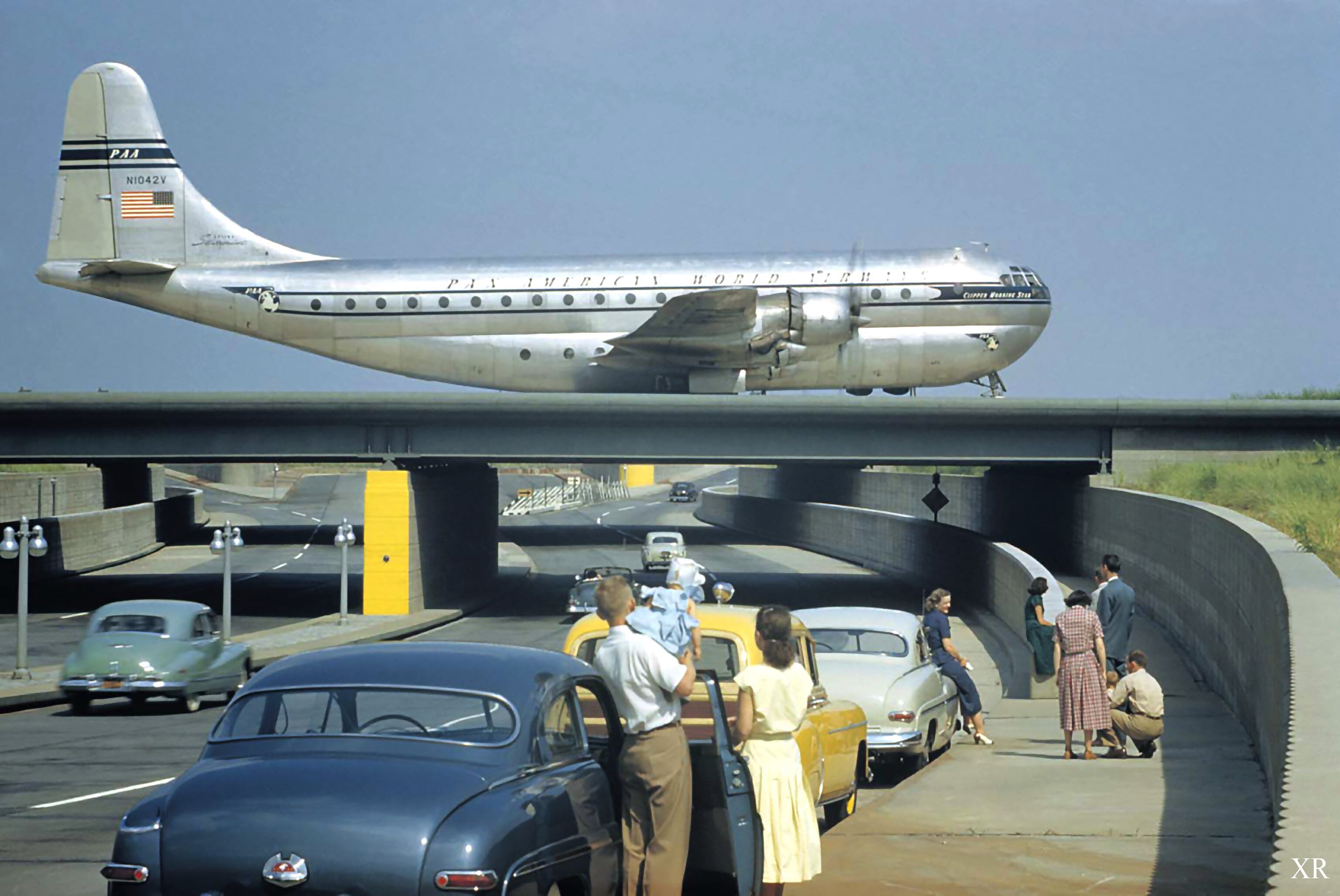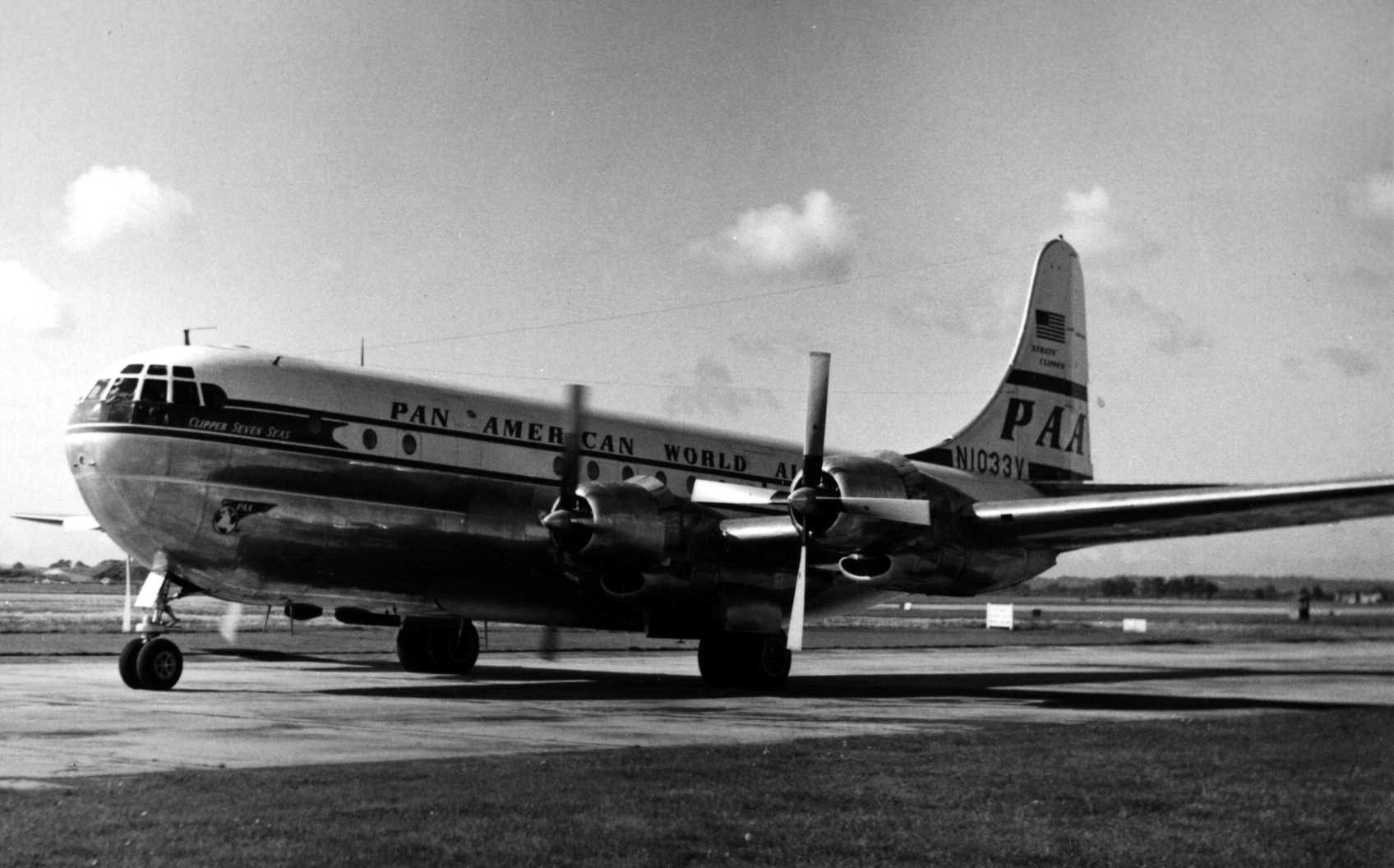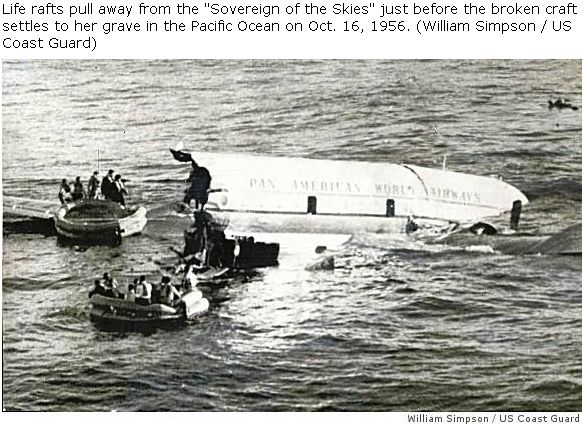Pan American World Airways flight 6 was the final leg of a round-the-world trip, departing from Honolulu, Hawaii and heading for San Francisco, California. There were 24 passengers onboard the Boeing 377 Stratocruiser, named 'Sovereign Of The Skies'. There were four crew in the flight deck, captain Richard Ogg, first officer George Haaker, flight engineer Frank Garcia Jr. and navigator Richard Brown. In the cabin, the purser was Patricia Reynolds, assisted by her flight attendants, Mary Ellen Daniel and Katherine Araki.
October 15th 1956
It was a warm evening in Honolulu and the passengers were excited about the remaining flight of their trip. Patricia, Mary and Katherine greeted their passengers onboard. Katherine seated her passengers in the tourist class section in the forward of the cabin and Mary took hers to first class in the rear of the cabin. Patricia oversaw the loading of the food and drinks in the galley and checked the cabin.
It was a luxurious double-decker aircraft with the flight deck, main cabin and galley on the upper deck and a lounge and cargo below. The flight attendants had given a safety demonstration on the ground. They also gave out safety instruction folders entitled 'Just in Case'. The Stratocruiser took to the skies with no one imagining what would later occur.
In the cruise
The flight time was an estimated 8 hours and 54 minutes. Patricia, Mary and Katherine had served a light supper and handed out pillows and blankets. The passengers were preparing for sleep, and the cabin lights had been dimmed. They were 4 hours and 38 minutes into the flight, and Mary had just been into the flight deck, taking the drinks orders for the flight crew. She was preparing coffee and Coca-Cola in the galley when there was a high-pitched noise, and the aircraft lurched. Mary had to stop herself from falling over.
Get all the latest aviation news right here on Simple Flying
What happened next
The number one engine had oversped. The flight crew reduced the airspeed by use of the flaps and made attempts to feather the propeller. The captain cut off the oil supply to the engine. A heavy thud followed, and the propeller continued to windmill. The airspeed had slowed to 150 knots and the aircraft was losing altitude. They were halfway across the Pacific Ocean and the navigator confirmed that they could not make it to San Francisco or return to Honolulu. The captain contacted the United States Coast Guard cutter ship,' Ocean Station November' which was located nearby, and advised them they would need to ditch the aircraft into the ocean.
Preparing for ditching
The captain informed the flight attendants and asked them to prepare the cabin. He announced to the passengers that there would be a landing on water. Patricia, Mary and Katherine instructed the passengers to remove their glasses, shoes and any sharp objects. They made sure everyone was wearing life jackets and improvised, fitting adult life jackets onto the three children onboard.
They showed the passengers the locations of the life rafts and assigned passengers to launch them. Loose items in the cabin were secured in the lower lounge. Passengers were moved into the forward cabin, as the captain remembered a previous incident where the tail had broken off during a water landing. Patricia, Mary and Katherine all instructed the passengers on how to brace for the landing.
 But...
But...
The flight course was changed in order to reach the area where the ship was located. The flight crew applied power to the remaining three engines, discovering that there was also an issue with engine four. The captain decided it was better to continue flying over the ship until dawn in order to have better visibility to land on water. He advised the passengers of his decision and personally spoke to the passengers in the cabin. The flight attendants continued to brief the passengers in more detail regarding the over-wing exits and lifelines. Passengers were allowed to smoke and walk around during the remaining hours and Patricia, Mary and Katherine served drinks.
Ten-minute warning
They continued to circle the ship, using the fuel so that the aircraft would be as light as possible. A few rehearsed approaches were made. The coast guard asked for a ten-minute warning so that they could be prepared for the rescue. At 05.40 on October 16th, the captain told the ship he was preparing to ditch the aircraft. The ship laid a foam path where the aircraft could 'land'. The captain told the passengers to prepare for landing and follow the flight attendants' instructions. Reportedly, there was a sense of calm in the cabin.
One minute warning
The captain advised the passengers and crew again to brace, one minute before the landing. The aircraft ditched at 06:16 in the morning. Some passengers were thrown to the floor on impact. The fuselage broke off behind the main cabin door and the nose was damaged. Patricia, Katherine and Mary opened the emergency exit doors and proceeded to shout instructions to the passengers. Two life rafts were pushed out by Patricia and Katherine through the over-wing exits and one from the main cabin door. The latter had become trapped against the fuselage by the tail section.
Survival
Passengers moved from the wings into the rafts, followed by the crew and finally the captain. The passengers and crew had safely evacuated the aircraft and were on life rafts by 06.32. The aircraft sunk into the ocean at 06.35. They were all safely moved from life rafts onto rescue boats and taken back to the ship. Surprisingly, there were only a few minor injuries. The crew all received awards for their work. The captain received the Civilian Airmanship Award from the Order of Daedalians.
"The passengers were thoroughly instructed in correct emergency procedures and the aircraft was ditched under control with no fatalities. Evacuation of the aircraft was well planned and orderly."- Civil Aeronautics Board accident report



